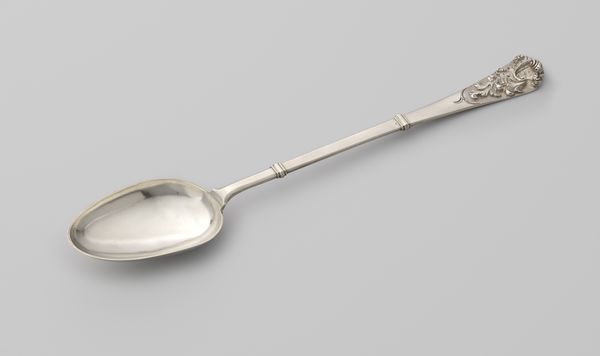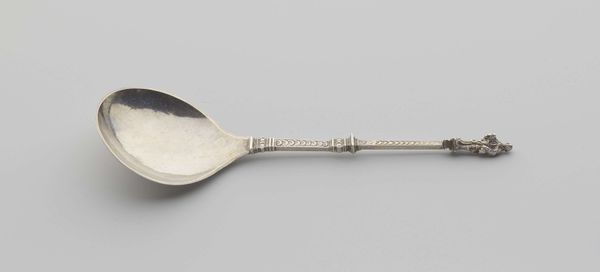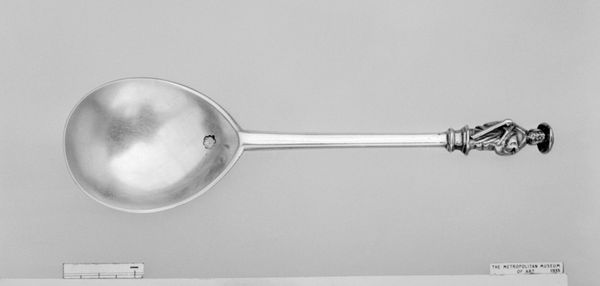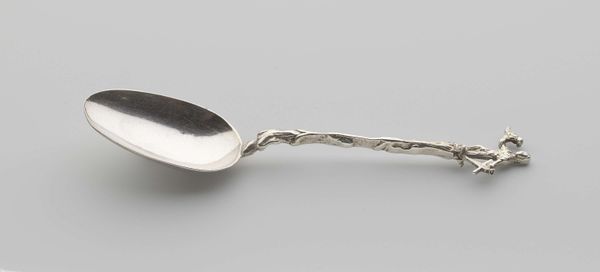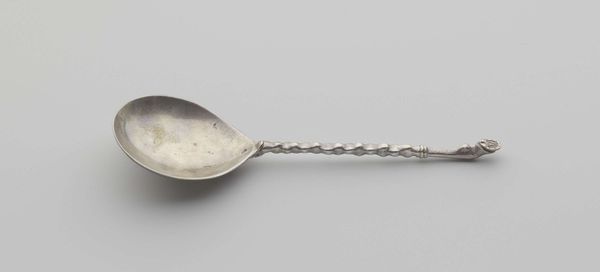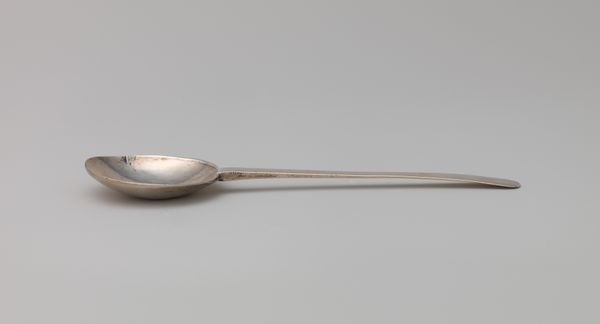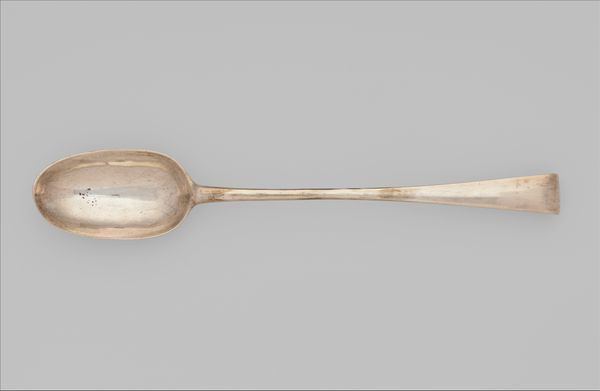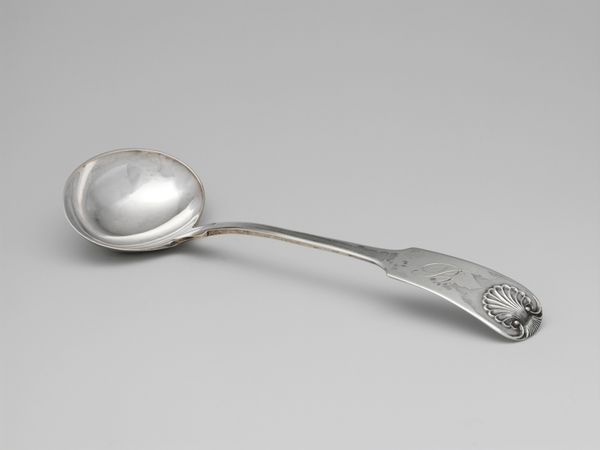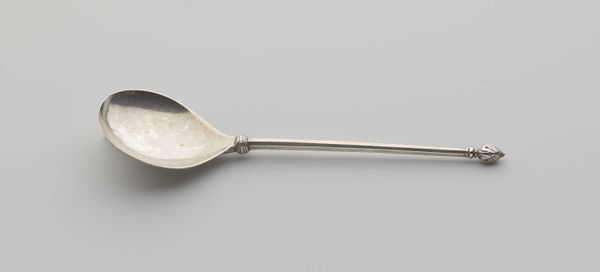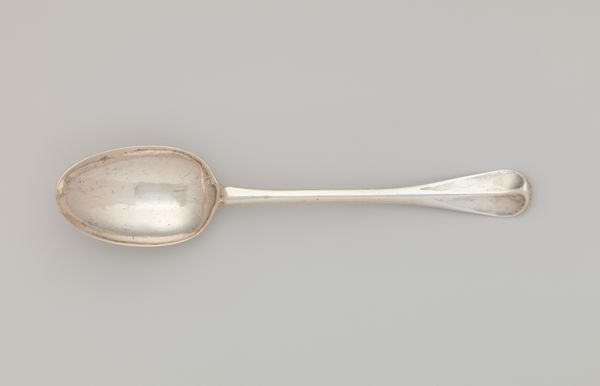
Dimensions: Length: 14 15/16 in. (37.9 cm); Other: 13.272oz. (376.297g)
Copyright: Public Domain
This is a silver Ladle made by Jacques-Nicolas Roettiers in the 18th century. Notice the handle's design, which terminates in what appears to be a stylized depiction of entwined serpents or perhaps sprouting flora. Such motifs echo the caduceus of Hermes, or even Asclepius’s staff, both symbols linked to healing and commerce. The spiraling form is also suggestive of the ouroboros, the snake consuming its own tail, an ancient symbol of eternity and cyclical renewal. We see this twisting form resurface in ancient alchemy and mythology, often tied to themes of transformation and rebirth. Think of the intertwined snakes in ancient Greek sculptures or even the double helix of DNA in modern science. The image of the serpent can evoke a primal fear, or a deeper, more intuitive understanding of life's cyclical nature. Observe how Roettiers has transformed this potentially unsettling image into an object of refined elegance. The serpent, once a symbol of chaos, is here tamed, refined, and elevated into an emblem of sophistication. It has resurfaced, evolved, and taken on new meanings in a different historical context.
Comments
No comments
Be the first to comment and join the conversation on the ultimate creative platform.
